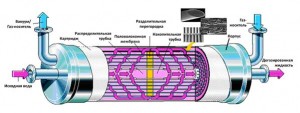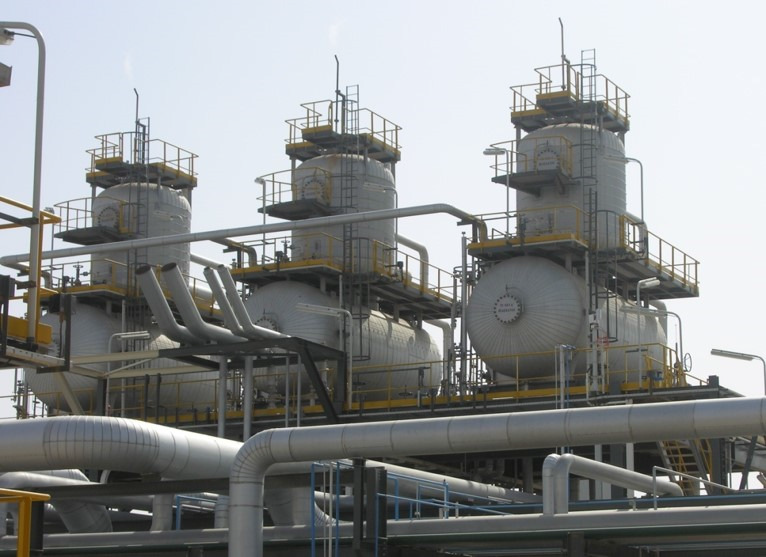|
Membrane deaeration - the most effective and multi-purpose method of water removing from all dissolves gases/water aeration, which extensively used in many industries.
Membrane contactor operating principle consist of diffusion transfer of dissolved gases (oxygen and/or carbonic acid) to inert carrier flow or to vacuum through hydrophobic membrane pores. The membrane organize the interphase and play a part such as barrier for water (water doesn’t pass through membrane as it is not moistened) and let to amplify a big phase contact area. For highest packing characteristic of membrane modules with microporous hollow-fiber membrane are used. |
|
 |
|
| There are 3 ways to organize the process of membrane deaeration: with carrier gas delivering into membrane fibres, with vacuum inside the fibres and mixed method, from one side there is gas supplying, from the other vacuum keeping by liquid-packed vacuum pump. Water supplies to interfiber area with backflow to carrier gas supplying. | |
|
|
|
|
The membrane deaeration sets are made from membrane modules, which has a membrane square from 0,18 to 220 m2.
Membrane deaerators advantages:
Membrane deaerators disadvantages:
|
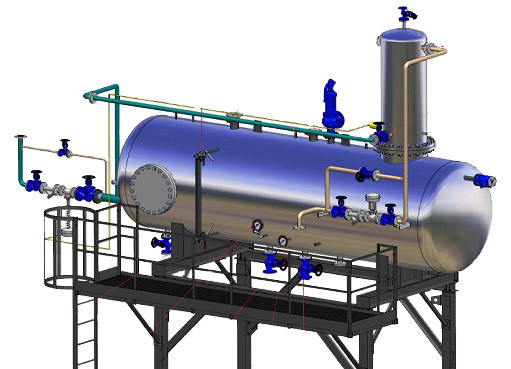
Short description of atmosphere-type water deaeration system process
Thermal atmosphere deaerator consist of water-jet mixing heat-exchanger and atmosphere cyclone separator.
Deaerator has two-stage of deaeration: 1st stage – chemically cleaned water heating with temperature from 5÷10˚С to 102˚С at water-jet mixing heat-exchanger, 2nd stage – separation of gas-vapor mixture and water in cyclone separator.
Chemically cleaned water flow with temperature 5÷10˚С (or 45÷55 ºC, in case when water goes through the water-moderated heat-exchanger heating by deaerating water after deaerating tank) and with pressure 0,1÷0,3 atm supplies to water-jet mixing heat-exchanger to heat water up to temperature 102˚С and with steam pressure 0,1÷0,4 atm.
Intensive mixing of fast jet water with gas in heat-exchanger mixing chamber form from dissolves gases (О2, СО2) the gas-vapor bubbles. The formed two-phase flow goes to cyclone separator and separates to gas-vapor mix and water. Deaerating water flows to hot well (it volume is (m3) 50% of maximum deaerator water discharge), but evolved gas goes to atmosphere. From hot well deaerating water pumps and then according to layout. The height of hot well must be about 3 m, provided that installed water-moderated hear exchanger will cool the deaerating water to 80ºС temperature with chemically cleaned water. It’s recommended to avoid the deaerating water boiling during pumping.
Water-level control in the hot well realized by control valve, which installed on supply line of chemically cleaned water, which goes to heat-exchanger. Hot well has a pressure-difference transmitter from which current signal goes to PID transmitter regulating the control valve.
Temperature control of chemically cleaned water after heat-exchanger realize by control valve, which installed on gas supply line.
Piping with heated water after heat-exchanger has a temperature transmitter from which current signal goes to PID transmitter regulating the control valve.
|
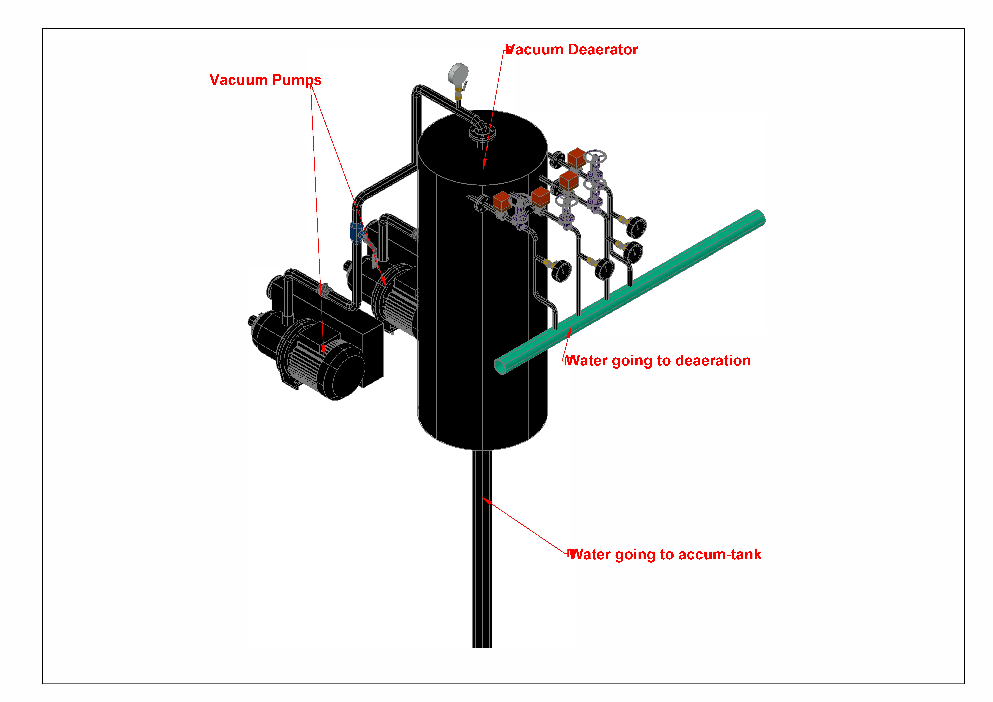 |
Vacuum deaerator technical data:
| Rated capacity, m³/h | 7, 15, 35, 50, 100, 150, 200 |
| Nominal temperature of treated water before deaerator, ˚С | 75-80 |
| Nominal treated water pressure before vacuum deaerator, Bar | 4 |
| Nominal treated water pressure before vacuum deaerator, Bar | -0,5 |
| Concentration of dissolved oxygen before deaerator, mkg/l | >8000 |
| Concentration of dissolved oxygen after deaerator, mkg/l | <50 |
Short description of water vacuum deaeration system operation:
Chemically cleaned water flow with temperature 20°С goes through heat-exchanger thus is being heated by system water flow with temperature 75-80°С (summer time they use water from the recalculating line of water heating boiler) and then goes to working nozzles of vacuum deaerator.
Vacuum deaeration system can operate in different modes. The rated output of every mode and number of modes are determined after receiving detailed technical specification for design.
It is possible to regulate the output by the receiving signal from the level gauge which is mounted on the hot well.
When the chemically cleaned water goes through the working nozzles it boils and then begins to discharge the dissolved corrosive gases (О2, СО2).
Deaeration and discharging corrosive gases removal are realized by the vacuum pump.
The pressure of vacuum deaerator is (-0,5÷-0,8) atm (by vacuum-gauge). Deaerating water flows after vacuum deaerator to hot well. Minimal volume of hot well is 5-10% of maximum deaerator output rate. It is possible to supply any other volume hot well according to the customer’s choice.
Deaerating water from well to accumulator tank or boilers is supplied by deaerating water pump.
Discharging corrosive gases remove by the liquid-packed vacuum pump from deaerating column and deaerating tank to cold water tank. The system has two pumps, one working, and another reserve. Cold process water with temperature 15-20˚С is used as sealing water of vacuum pump. The cold water pumps from cold water tank.
After vacuum pump discharge water and water mix with corrosive gases flow together to the tank of vacuum pumps. Hot water with temperature 50-60°C pumps to cold water piping before heat-exchanger by Q=1 m³/h., H=60 m.v.st pump. The system has two pumps, one working, and another reserve.
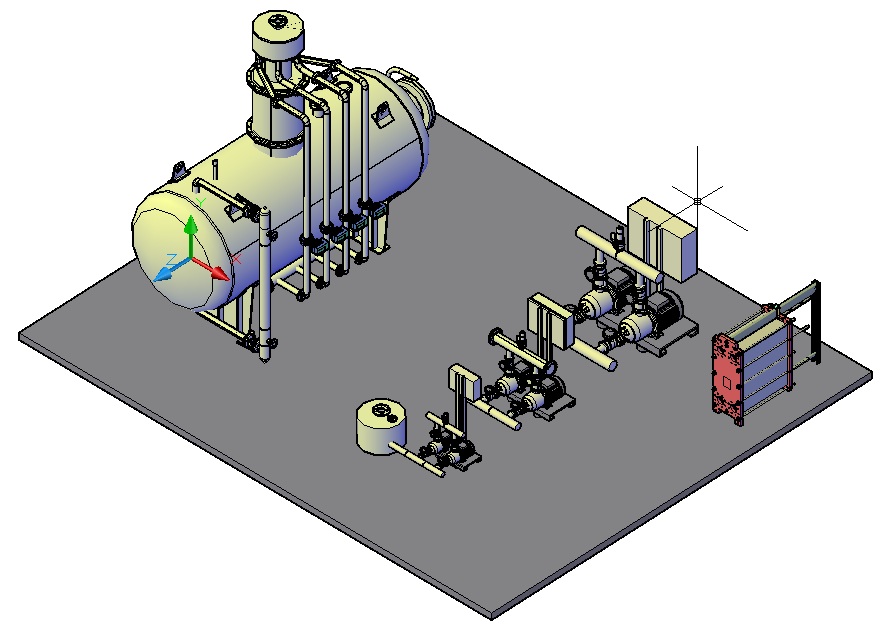
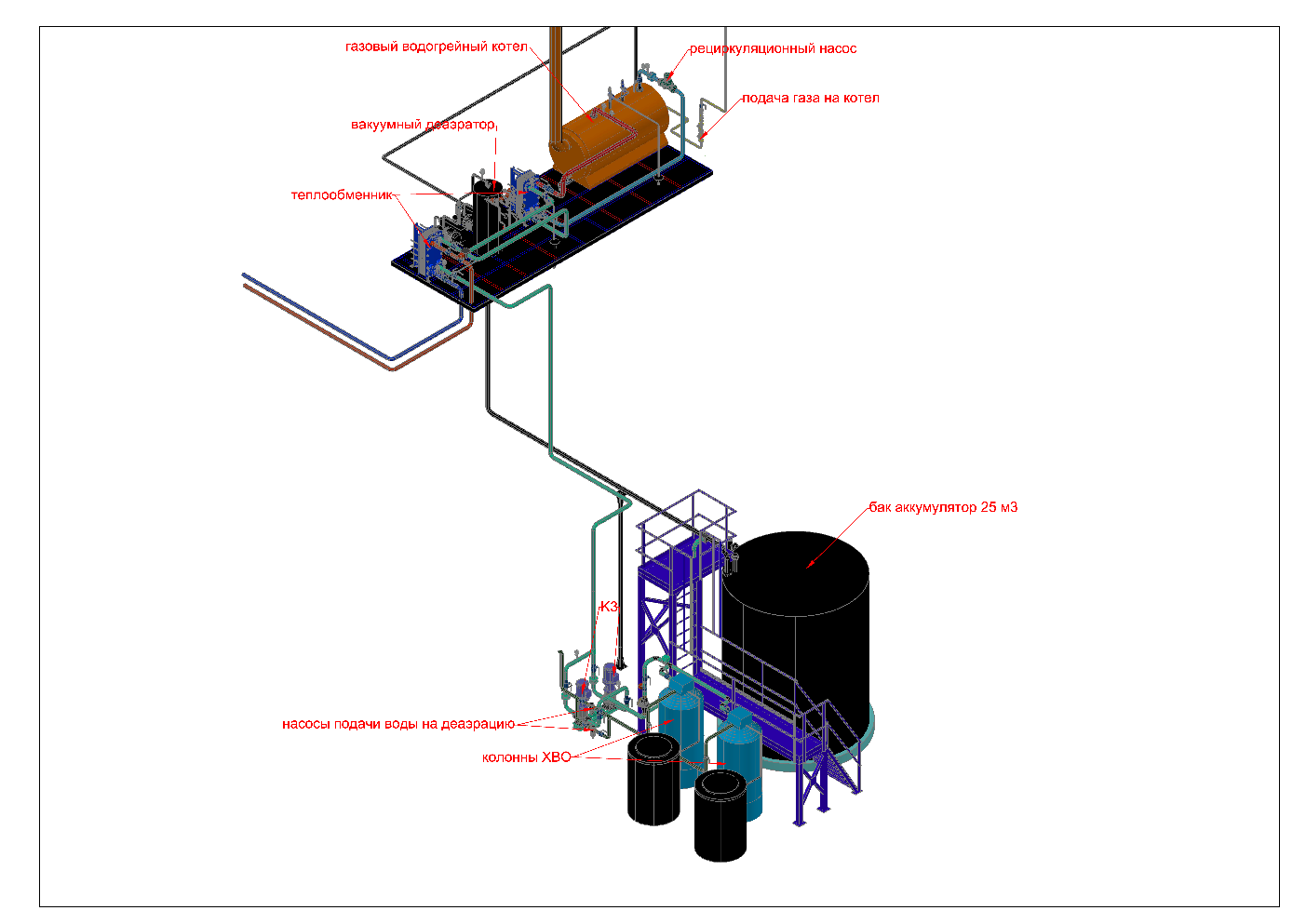
SECTIONS
Contacts
Veteranu str. 5-А,
VISAGINAS LT-31114
Utena cap.
Lithuania LTU
+(370) 386 71 481
Quick SMS
Contact us
Your message has been sent sucessfully




